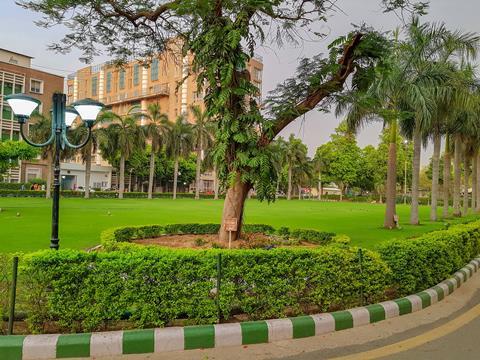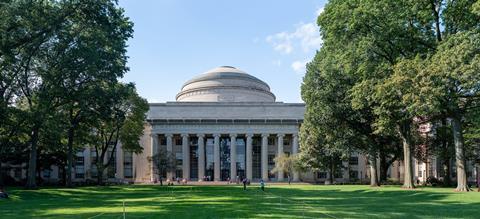Arpita Bose is an Associate Professor at Washington University in St. Louis, USA in the Department of Biology. As a graduate student in her lab, I am in awe of her achievements, both professional and personal. To learn more about her life as a scientist, we recently had a short Q&A session. I marvel at the fact that she sat down to speak with me not two weeks after welcoming a new baby into her young family.
Early choices
Growing up in New Delhi, Arpita was not particularly interested in the sciences, instead enjoying artistic pursuits like drama and oil painting. Upon entering high school, despite her gravitation towards the arts, Arpita understood the humanities track to be restrictive in career options. Remembering her microbiology class and the excitement she felt learning of an entire world unseen all around us, Arpita chose to pursue biology. She saw biology as similar to the arts; unlike maths and physics, it offered more mystery and fewer finite answers. After high school she chose to specialise in microbiology at Gargi College, University of Delhi, where she won a Presidential Gold Medal for her BSc (Hons) in Microbiology. Although she was offered jobs in the pharmaceutical industry immediately after her undergraduate studies, she remained interested in microbial research and pursued further education. She completed her Masters at the All India Institute of Medical Sciences, New Delhi, where she studied Mycobacterium tuberculosis. Arpita then pursued her interest in environmental microbiology, completing a PhD at the University of Illinois at Urbana-Champaign. Here, she began learning the importance of mentoring with empathy. Her postdoc studies at both MIT and Harvard solidified her present lab research in combinatorial approaches to studying unique microbial metabolisms at an environmental level.

As your student, I’ve seen you apply for so many diverse funding opportunities over the years and you always seem to have more that you’re interested in. How do you find these funding sources and decide which ones to apply for?
Being creative is important in science and the arts. This applies to funding also. I use many resources that are shared on my lab website for everyone to seek as many funding opportunities as they can. Science needs creative people and creative people need funding. However, the most creative ideas are often overlooked as they are high risk and not yet proven. This is where creative fund-seeking helps. I can do high-risk projects that make a large impact on society by having acquired non-traditional funding.
You are always juggling so many responsibilities, as an educator, mentor, faculty, global scientist, and outside of science as a mother, sister, daughter, colleague, friend. How do you manage?
I do one important thing every day of the week. I try not to work weekends because I have a young family. But the 9–5 hours are sacred, and I never skip a day when I don’t work. I try to divide my day into chunks and try not to do more than two major tasks a week. With teaching and other administrative duties, this is the most effective way for me to write papers, articles, books and grant proposals.

Many new scientists are turning towards ‘non-traditional’ science careers outside of academia. How do you view this ‘exodus’, if you will, of recent grads from academia?
I don’t see it as an exodus but rather a recalibration of what science is to society. Science means a lot to people and it isn’t just about running a lab. It is to train and excite people to do things they want to do. I view this as a new renaissance for science, where we are seeing a shift in how trainees see themselves in the broader societal fabric. I am proud of all the new ways they are taking their training and can’t wait to see even more creative uses of their training in graduate school. The sky is the limit. In this way, what others see as ‘non-traditional’ I see as ‘creative’. This is what scientists are and all these paths lead to creativity.
As a trainee and a Sagittarius, one point of anxiety I’ve always worried about is how concrete my path must be. What advice can you offer to feel confident in following your instincts, the science, and your interests down paths that aren’t necessarily what you started down?
If a path is planned, life will happen. It will add twists and turns you never foresaw. This will be true about your scientific journey too. This is what will make your path unique and if you don’t experience this, you will be bored of anything, including science. I encourage everyone to lead a free life where boundaries are just suggestions, and pushing yourself, although not required, makes things more fulfilling. We must follow our instincts always and know that no matter what, that instinctual path is yours and will be your signature.

From our discussion, what has rung true to Arpita throughout her life has been letting her path be organic and making decisions with her heart. In her youth, following and trusting her interests led her to microbiology. As she matured, she began trusting her needs, always remaining creative while pursuing the questions – both personal and professional – that inspired her.










No comments yet